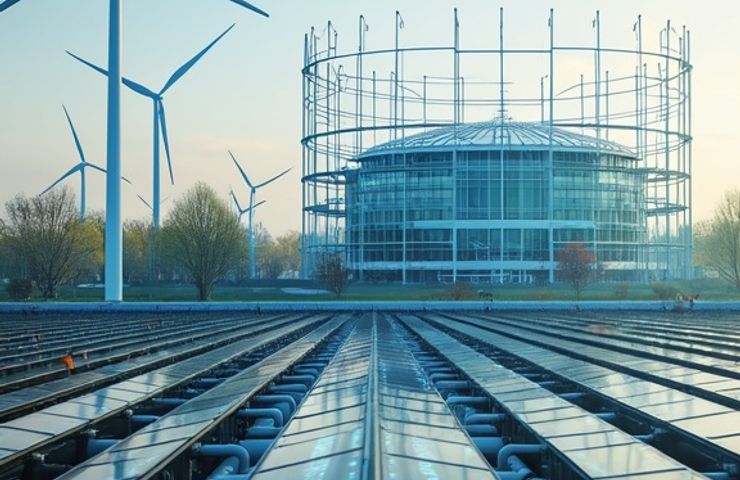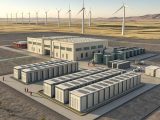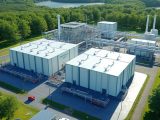
Hydrogen production costs could fall €1–2/kg as EU weighs RFNBO rule change
October 2, 2025In Brussels, at The Square conference center—home turf for heavyweight policy debates in a city of 1.85 million—industry leaders assembled for European Hydrogen Week 2025 (September 29–October 3). You had executives from Thyssenkrupp Nucera, RWE Hydrogen Generation, Hydrogen Europe and Daimler Truck AG all urging EU regulators to dial back the rigid temporal correlation rules in the RFNBO framework. Right now, the clock rule dictates that by 2030 every single hour of hydrogen output must match a corresponding hour of renewable power input in the same bidding zone. Industry insiders warn that could pin electrolyzers at 50% utilization, jacking up green hydrogen costs by about €2 per kilogram and stalling Europe’s clean-energy ambitions. If you ask around, the consensus is clear: regulatory clarity is just as crucial as the next big tech breakthrough for shaping Europe’s hydrogen production and market future.
Regulatory Evolution
The story really kicked off with the 2020 EU Regulation on advanced renewables, followed by Delegated Acts in mid-2021 laying down extra requirements around additionality, geography and timing. A late-2023 amendment piled on strict hourly matching and an arbitrary cut-off for new renewables back to January 2020. Sure, it was meant to certify genuinely green hydrogen, but it has boxed in sourcing to freshly built assets, muddied procurement and created legal gray areas. Now everyone from Brussels to Budapest is calling for a leaner rulebook that keeps sustainability checks in place without tripping up operations. Meanwhile, national capitals are racing to draft their own implementations—raising the risk of a balkanized market if the EU doesn’t weigh in soon with a unified EU hydrogen policy.
Market Impact
Europe’s appetite for hydrogen could top 10 million tonnes by 2030. Relaxing those RFNBO rules would:
- Slash production costs by €1–2/kg, bringing output prices down to roughly €3–4/kg instead of €6–8/kg under the tight regime.
- Boost electrolyzers from ~50% up to 80–90% utilization, clearing the way for multi-gigawatt projects.
- Cut reliance on foreign imports by feeding domestic industries—steel, refining and chemicals—with homegrown hydrogen production, saving billions annually.
- Keep pump prices at a steady €4–5/kg, a must for scaling up hydrogen fuel cell trucks.
- Accelerate European manufacturing of electrolyzers, compressors and storage—fueling a boom in high-value jobs and robust hydrogen infrastructure.
Simply trading in renewable certificates won’t hack it; operators need real operational leeway.
Technical Snapshot
Electrolyzers work by using clean power to split water into hydrogen and oxygen. Under current rules, you have to match each hour of hydrogen output to actual renewable generation in the same bidding zone. That leaves little room to smooth production with battery backup or adjust for the natural ups and downs of solar or offshore wind. To tick certification boxes, operators are often forced to sink cash into extra storage—hiking up CAPEX without improving grid stability.
If regulators would shift to daily or annual averaging windows—or let bidding zones pool their renewables—we’d see utilization jump to 80–90%. That would crash the levelized cost of hydrogen (LCOH), shorten payback times and really juice investment in new projects.
Voices from the Week
Werner Ponikwar of Thyssenkrupp Nucera put it bluntly: “Relaxing temporal correlation could slash costs by up to €2 per kilo, making Europe’s green hydrogen competitive globally.” Sopna Sury, COO at RWE Hydrogen Generation, warned, “These rules are holding back cost competitiveness and delaying our clean-energy transition.” Jorgo Chatzimarkakis, CEO of Hydrogen Europe, is pushing for a revamped EU hydrogen strategy by early 2026 and “investment-protection mechanisms” to safeguard first movers. And Karin Rådström, CEO of Daimler Truck AG, didn’t mince words: “We won’t see hydrogen trucks roll out at the pace the industry expects until pump prices stabilize at €4–5/kg.”
Several European Commission reps sat in on these sessions, acknowledging the need to balance ambition with market realities—and promising to factor in industry feedback ahead of the RFNBO review.
Historical Context
Behind all this is the 2020 EU Hydrogen Strategy, which led to the Delegated Act on RFNBOs in mid-2021 and its late-2023 tweak. By 2022, more than 10 GW of electrolyzer projects had been announced across Europe, prompting calls for regulatory certainty. A public consultation in late-2022 pulled in over 200 industry voices, highlighting the risk of policy whiplash. Meanwhile, regions with more flexible attribution models—like parts of North America and the Middle East—have raced ahead with electrolyzer builds, widening Europe’s competitiveness gap.
Collateral Impacts
If hourly matching stays in place, expect:
- Investment paralysis: Reduced utilization hurts returns and keeps financiers on the sidelines.
- Sectoral slowdown: Higher hydrogen prices stall decarbonization in steelmaking, ammonia production and refining.
- Infrastructure gridlock: Uncertain rules freeze pipelines, storage and offtake deals, fragmenting hydrogen corridors.
- Import dependency: Europe risks leaning on cheaper, less sustainable hydrogen imports, jeopardizing climate targets.
On the flip side, easing the rules could smooth permitting, inspire hybrid solutions and speed up the build-out of hydrogen infrastructure—from electrolyzers to pipelines—powering Europe’s industrial decarbonization roadmap. But if regulators stall, large-scale green hydrogen roll-out could slip beyond 2030, throwing net-zero goals out of sync.
Key Takeaways
- Loosening RFNBO temporal rules could knock €1–2/kg off green hydrogen costs and raise electrolyzer utilization to 80–90%.
- Production costs of €3–4/kg and pump prices of €4–5/kg are non-negotiable for scaling transport and other applications.
- Germany’s €24 billion pipeline amortization model offers a blueprint for rewarding early adopters.
- Consistent EU hydrogen policy is essential—without it, investors won’t commit.
- Harmonized rules across member states are key to avoiding a patchwork market.
- Watch for the revised RFNBO rulebook and updated EU hydrogen strategy, slated for early 2026.
Outlook
The message from delegates was clear: move to annual averaging or longer matching windows, roll out amortization schemes like Germany’s, and align RFNBO updates with the RED III review. National authorities are set to weave these changes into their National Energy and Climate Plans by 2026. The European Commission is expected to publish its RFNBO assessment alongside fresh Renewable Energy Directive guidelines in Q4 2025, with final Council sign-off in 2026. If all goes to plan, Europe’s hydrogen infrastructure—electrolyzers, pipelines and storage—could spring to life, driving down costs and accelerating the shift to zero-emission tech. A modest policy tweak today could be the catalyst for Europe’s hydrogen revolution.



 With over 15 years of reporting hydrogen news, we are your premier source for the latest updates and insights in hydrogen and renewable energy.
With over 15 years of reporting hydrogen news, we are your premier source for the latest updates and insights in hydrogen and renewable energy.